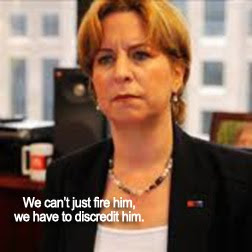
According to a recent Project Tomorrow survey, access to mobile technology in the classroom has more than tripled among high schools students since 2006. Most of them consider smart phones and other mobile devices critical to learning, but some policies generally prevent students from using the devices in school.
That isn't the case for every school. Some educators have taken to incorporating smart phones and mobile devices into the education platform rather than assuming they will detract from it (and 62 percent of parents say they would purchase a digital device if it were to be used for education). And where they are being incorporated, the results speak for themselves.
"We are beginning to see mobile learning take shape in pockets around the nation where a small but growing number of innovative educators are finding ways to leverage the once banned mobile devices for learning," said Julie Evans, chief executive officer of Project Tomorrow. "Educators have an opportunity to help students learn more effectively and deeply by leveraging students' preferred learning tools and strategies."
The report reveals a shift in thinking by parents and educators who are now beginning to accept the role of mobile devices as instructional tools, in part because they are active users of mobile devices in their own personal lives. At Jamestown Elementary School in Virginia, for example, students use mobile devices to create multimedia projects, improve their writing skills, and collaborate with their peers. We need more schools to take the right step in this direction.
The Digital Advantage For Education.
Working as a part-time near volunteer educator, I've been slowly integrating more digital content into the classroom on my own. I would implement the concept much more aggressively, but the holdback is the surprisingly limited accessibility of WiFi hot spots on campus. Go figure.
Since WiFi is not always readily available, I've employed a transitional approach such as my upcoming Social Media for Communication Strategy this Friday. (The class is from 9 a.m. to noon, in case you are interested). It's less than ideal, but it's a start.
I'll present, speak, and take questions during class. Then, I'll make the deck and select handouts available online for the students. I'll also provide some links where they can learn more, especially any living case studies that might span several posts on this blog. Students are always invited to connect, collaborate, and ask questions after the fact too. Some do, for years.
Imagine how impacting and easier this would all be if everyone had tablets and the schools had the right tools. I would be able to present on the big screen and then electronically push handouts and/or live content to every tablet in the room to augment the content in real time.
I could also feel free to integrate more interactive features that go well beyond the typical counting a raise of hands. For example, I could send out, collect, and compile data with immediate surveys or even spontaneous in-class questionnaires and quizzes. This could help someone like me immediately identify which subject areas require more coverage.
Even in sessions where grades are irrelevant, it could be useful and create opportunities to discuss the outcomes from a peer-to-peer perspective. And, it would open the doors for universities to expand beyond their proximity; password accessed live-streaming video would capture some of what is lost from an in-classroom experience.
The same benefits would apply to high schools, replacing the need for three-ring binders, an abundance of handouts, and lack of take-home textbooks. Even better, when children have to stay at home, they could either watch from home or review prerecorded sessions to catch up. Or, perhaps teachers could host weekly online question and answer sessions after hours. The potential applications are limitless.
This is a direction that could eventually reshape education. At minimum, it might refocus on teaching children how to develop a love for learning as opposed to rote memorization to measure so-called performance. Need another reason?
Project Tomorrow Project K-Nect Results
• Students participating in Project K-Nect have a greater self-perception (61 percent) that they are succeeding academically than their national peers (39 percent).
• More than 90 percent of the students said that they are now more comfortable learning math, and 81 percent said that they have increased confidence talking about math and math problems.
• Almost two-thirds of the students reported taking additional math courses and over 50 percent are now thinking about a career in a math field.
• Teachers involved in Project K-Nect also report that their students are more responsible for their own learning and have developed more collaborative learning skills as a result.
The first step is tablets. The cost? Spread out over an entire education cycle, tablets might mean an investment of $100 per student per year (factoring in for upgrades over 12 years). However, even this cost may come with savings. School districts would save on textbooks, printing, and autodials.























